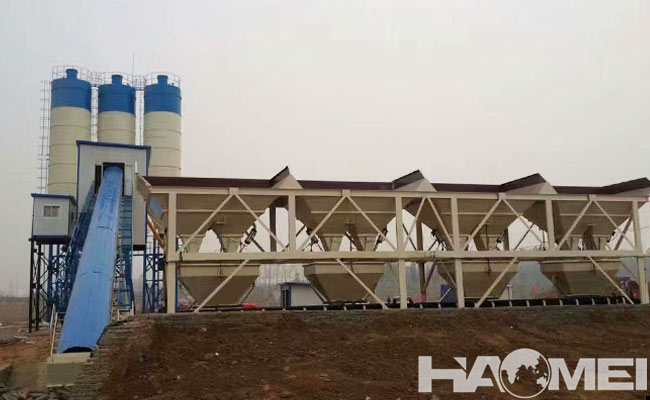Categories
- Case & News (48)
- Blog (515)
Commercial concrete batching plant is a professional equipment used to produce commercial concrete, which is widely used in construction engineering, road engineering, bridge construction and other fields. Compared with small concrete batching plant, commercial concrete batching plant usually has higher production capacity and more advanced technology, which can meet the large-scale concrete demand. The production capacity of a commercial concrete batching plant mainly depends on the model and configuration of its production line. Common models include single HZS90 station, HZS120 station, HZS180 station, HZS210 station, HZS270 station as well as combined stations such as double HZS90 station and double HZS120 station. The theoretical production capacity of these models is 90m³/h, 120m³/h, 180m³/h, 210m³/h and 270m³/h respectively.

The main components of commercial concrete batching plant are:
– Mixer: it is the core equipment of concrete batching plant, responsible for mixing various raw materials (such as cement, sand, stone, water and additives) evenly. Common types of mixers are forced and self-falling.
– Batching System: Used for accurate measurement and batching to ensure the quality and strength of concrete. Batching systems usually include multiple hoppers for storing different raw materials.
– Cement silo: Used for storing cement, usually of steel structure with pneumatic discharge device.
– Control system: Modern commercial concrete batching plants are equipped with an automated control system, which can be operated and monitored by computer to improve production efficiency and accuracy.
– Conveying system: used to convey the mixed concrete to the construction site, commonly with conveyor belt and mixer truck.
The construction and operating cost of a commercial concrete batching plant is affected by several factors, including:
– Equipment investment: depending on the size and configuration of the concrete mixing plant, equipment investment may range from several hundred thousand dollars to several million dollars.
– Site rental or purchase: the cost of the site needs to be considered, especially in urban or construction-intensive areas.
– Labor cost: need to hire operators, maintenance personnel, etc.
– Raw material cost: the cost of purchasing raw materials such as cement, sand, stone, etc.
– Transportation and distribution cost: the cost of transporting concrete to the construction site.
Commercial concrete batching plant is a large investment project, but it can provide efficient and stable concrete production to meet the needs of large-scale projects. Before investing, it is recommended to conduct detailed market research and cost analysis to ensure the feasibility and profitability of the project.